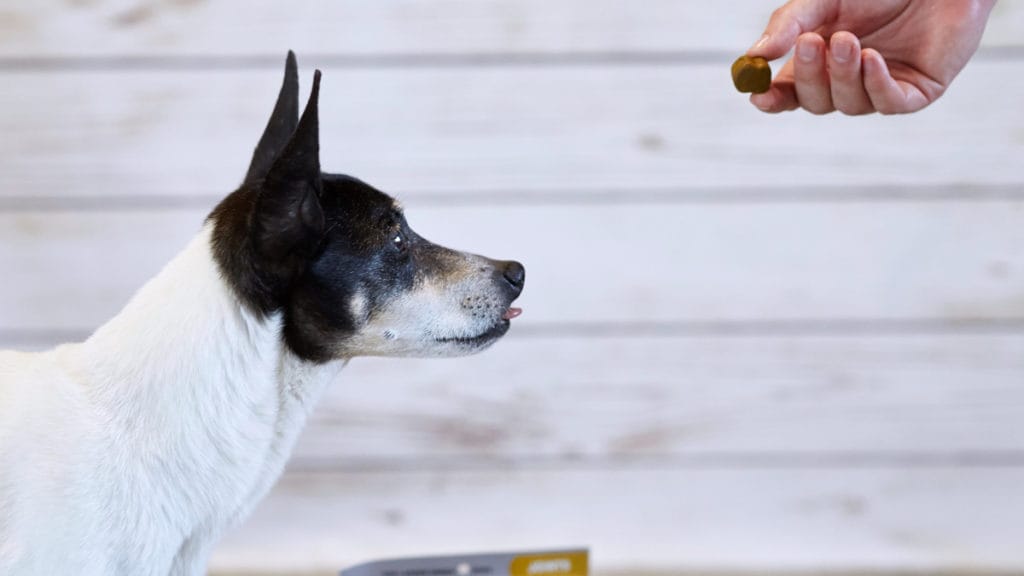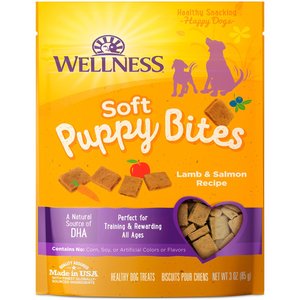What’s life without a little treat now and then, right? That goes for all kinds of dogs (as well as all kinds of people!)—but how many is too many for the best dog nutrition?
It’s fun to see our dog’s excitement when we reach for the treat bag, but it can be easy to hand over too much of a good thing. Treats—even the healthy variety, to a lesser extent—can add sneaky calories that soon show themselves on your now overweight dog. As Dr. Michel Selmer, “The Caring Vet” and the owner of Advanced Care for Pets in Huntington Station, New York, emphasizes, “We are what we eat—literally—and that goes for our pets as well.”
You can have the best of both worlds—allowing your fur baby to enjoy treats while maintaining a healthy dog—by keeping these guidelines in mind.
Remember, Less is More
In order to be sure that you’re promoting proper dog nutrition, “Treats should be given in moderation and should represent five percent or less of your pet’s daily food intake. The rest should come from a nutritionally complete feeding program,” urges Dr. Selmer.
If you’re often tempted to give your dog a little of what you’re eating, but know people food just isn’t good for him, you’ll likely appreciate dog treats that mimic your own favorites, such as Rachael Ray Nutrish meatloaf morsels. These goodies literally look like mini meatloafs!
Train Strategically
Many pup parents use treats as a way of training their dog to perform various good behaviors, such as coming when called, staying off the new velvet sofa, or even performing tricks (such as roll over). That can be fine, if you remember to give the reward as sparingly as possible.
“When using treats during training exercises, try to use the smallest pieces you can,” says Dr. Selmer, even if you have to take the extra step of breaking a too-big treat in half. If you have a new puppy at home, the Wellness lamb and salmon puppy treats are made as tiny, training-friendly bits.
Think snacks, not food
Many pet parents use dog treats as a way to show love and foster positive interactions between themselves and their poochies. Again, there’s nothing wrong with that. However, “Treats should really be thought of as snacks. These excess calories on a regular basis contribute greatly to the growing epidemic of pet obesity,” says Rachel Barrack, DVM, CVA, CVCH of Animal Acupuncture in New York City.
If you are also a parent to a human child, you’re familiar with this mindset. As much as your kids may ask oh-so-cutely, you know it’s not good for them to have snacks in place of a healthy, well-balanced meal. And when you do offer a snack, you make sure it’s a healthier one. In canine terms, that might mean choosing a treat with the best-quality ingredients, like the grass-fed beef in Stella & Chewy’s beef dog treats.
Consider Chatting With Your Veterinarian
Every dog has individualized caloric needs, depending on age, breed and activity level. Those needs can be hard to assess on your own, especially if your pet is already a bit on the pudgy side. In that situation, “Meet with your veterinarian to determine the specific dietary requirements of your dog. Should snack rewards be something you want to continue with your pet, subtract the calories associated with those from your dog’s daily caloric recommendation [from your vet] to ensure your pet is not overindulging,” says Dr. Barrack. “As a veterinarian, I regularly see many overweight pets. Being overweight can cause many serious health problems in dogs and exacerbate pre-existing conditions.”
Obviously, the fewer calories the treat in question has, the easier it will be to accomplish this. One product to consider might be PupCorn Plus peanut butter dog treats, which is 5 calories a treat.
Size Up Other Options, If Necessary
Some dogs, once used to treats, will make it really hard not to give in with one more goody. If you have a dog like this, you know what we mean: the begging, the pleading look, the dancing around your feet every time you go into the kitchen.
If your resolve can’t stand up to puppy eyes, yet you have an overweight dog, it may be time to shift to a different kind of reward. “All kinds of dogs respond well to verbal praise, physical affection, a new toy, and/or exercise or playtime in lieu of a snack reward,” points out Dr. Barrack. This tactic can be part of your plan to have a happy, healthy dog.

Christina Vercelletto is a pet, travel and lifestyle content specialist and a former editor of Parenting, Scholastic Parent & Child, and Woman’s Day. She lives on Long Island with her Chiweenie, Pickles, and 20-pound Calico, Chub-Chub.
Share:














